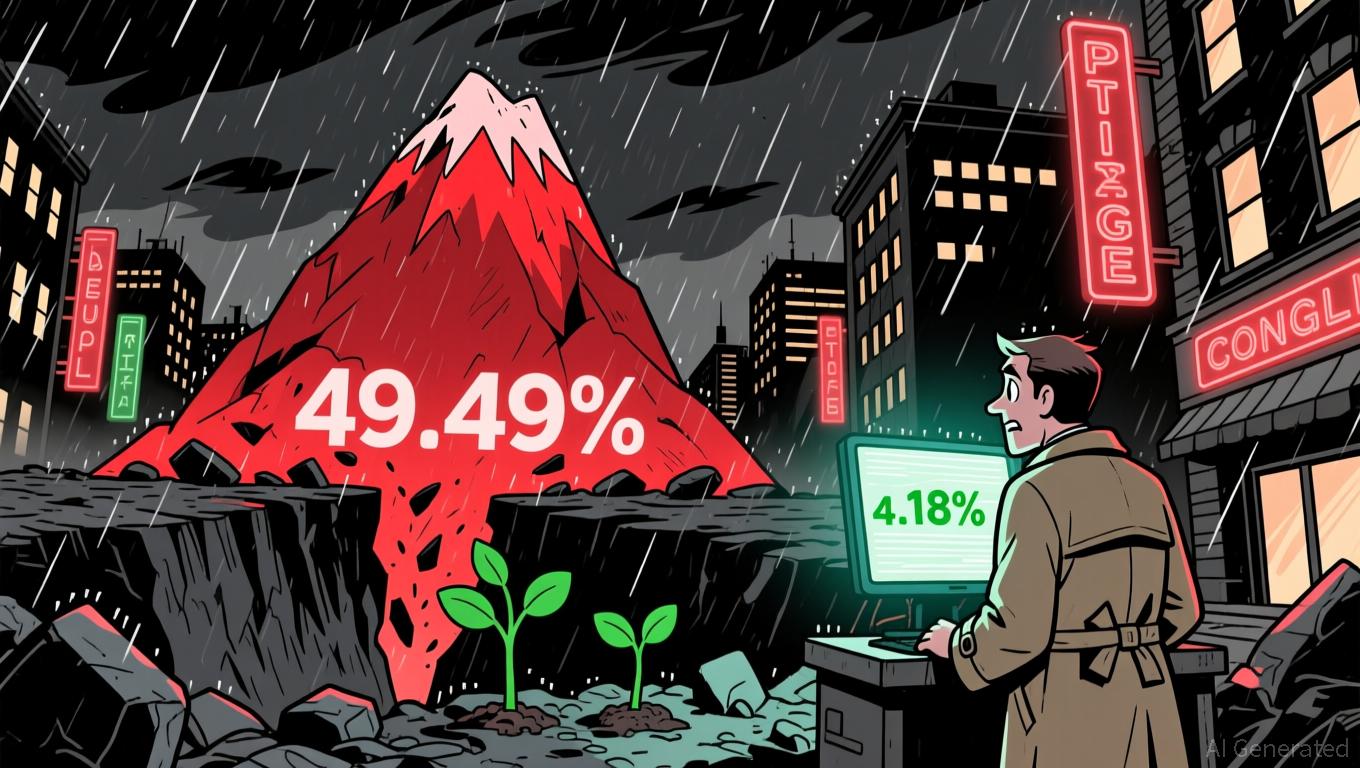YFI Value Increases by 1.18% During Market Fluctuations
- YFI rose 1.18% in 24 hours to $4,036 but fell 49.49% annually, highlighting extreme volatility. - Short-term gains lack clear catalysts, with analysts noting broader market dynamics drive fluctuations. - Long-term bearish trends persist despite temporary rebounds, urging caution amid macroeconomic pressures.
On November 24, 2025, YFI (yearly interest factor) saw its value climb by 1.18% in the past 24 hours, bringing its price to $4,036. Despite this brief upward movement, the overall trend remains negative: in the last seven days, YFI has fallen by 9.16%, and over the previous 30 days, it has lost 14.24%. Most notably, the asset has suffered a 49.49% decrease over the past year, highlighting a persistent bearish pattern even with the recent short-term rise.
This activity highlights the continued instability within the

The recent changes in YFI’s price mirror the broader sense of unpredictability in the market. Short-lived gains can often be attributed to shifts in liquidity, economic indicators, or speculative trades. However, since there have been no notable news or events linked to YFI, this movement likely stems from general market forces. Traders are watching closely for any signs of stabilization, but the prevailing downward trend continues to dominate.
Given the asset’s performance over the past year, investors should approach with caution, as it remains highly responsive to economic shifts and changing market sentiment. While the latest increase is encouraging, it does not necessarily signal a reversal of the broader trend. Uncertainty is still being factored into the market, and only a sustained period of growth could indicate a potential change in direction.
Disclaimer: The content of this article solely reflects the author's opinion and does not represent the platform in any capacity. This article is not intended to serve as a reference for making investment decisions.
You may also like
Bitcoin News Update: Institutions Acquire Crypto Shares Amid Rising Bearish Bets on Bitcoin
- Bitcoin's $80,000 put options dominate trading with $2B open interest, signaling sharp bearish reversal after its worst monthly drop since 2022. - ETF outflows accelerated declines, with $3.8B November redemptions, while Ark Invest added $38.7M in crypto equities amid market fragmentation. - Analysts warn leveraged losses ($19B in October) and forced liquidations amplify downturn, with Citi noting critical support at $80,000. - Market remains divided: Binance calls pullback "healthy," while Peter Brandt

Hyperliquid News Today: Speculation Drives Meme Coin Rally Despite Regulatory Alerts
- Meme coins surged on Nov 24, 2025, with PIPPIN rising 80% in 2 hours to $0.053 and $53.15M market cap. - BANANA (+20%) and TNSR (+50%) joined the frenzy, reflecting speculative flows shifting to high-risk assets amid Bitcoin stabilization. - Perpetual DEX protocols hit $4.24M daily revenue while Fed rate-cut expectations and token unlocks fueled volatility. - Regulators warned of risks as India exposed an AI-generated deepfake fraud, highlighting sector instability and regulatory scrutiny. - Analysts cau

Bitcoin News Today: JPMorgan’s Alert Ignites Discussion: Does MicroStrategy Serve as a Stand-In for Bitcoin or Function as a Business Entity?
- JPMorgan warns MSCI's potential exclusion of crypto treasury firms like MicroStrategy could trigger $8.8B in passive outflows, sparking market debates over corporate classification. - MicroStrategy CEO Michael Saylor rejects criticism, emphasizing the firm's "Bitcoin-backed operating" model with $500M software revenue and 649,870 BTC holdings. - Bitcoin's $81,500 slump and 23% Coinbase drop highlight institutional unease, while MSTR stock absorbs hedging pressure as crypto investors' proxy. - Analysts sp
Fed Faces Tough Choice: Balancing Inflation Management and Job Market Stability
- The Fed faces a December meeting dilemma: cut rates to ease labor market strains or maintain rates to combat persistent inflation above 2%. - Officials like Susan Collins argue current 3.75%-4% rates remain appropriate, while John Williams supports a 25-basis-point cut to reach neutrality. - Data gaps from the government shutdown delay key labor market insights, complicating decisions as Beth Hammack warns cuts risk prolonging inflation. - The FOMC will end quantitative tightening in December, signaling
